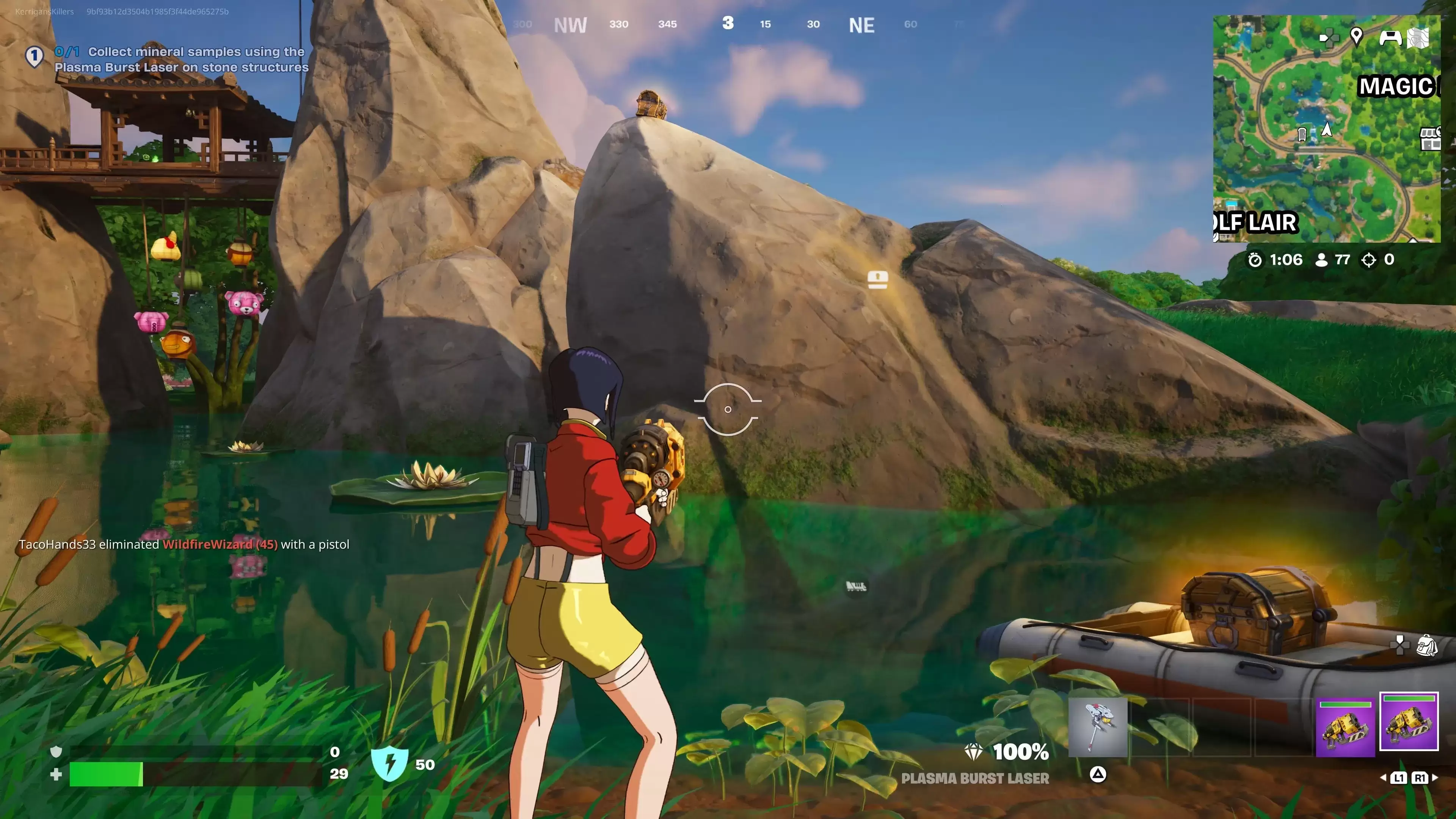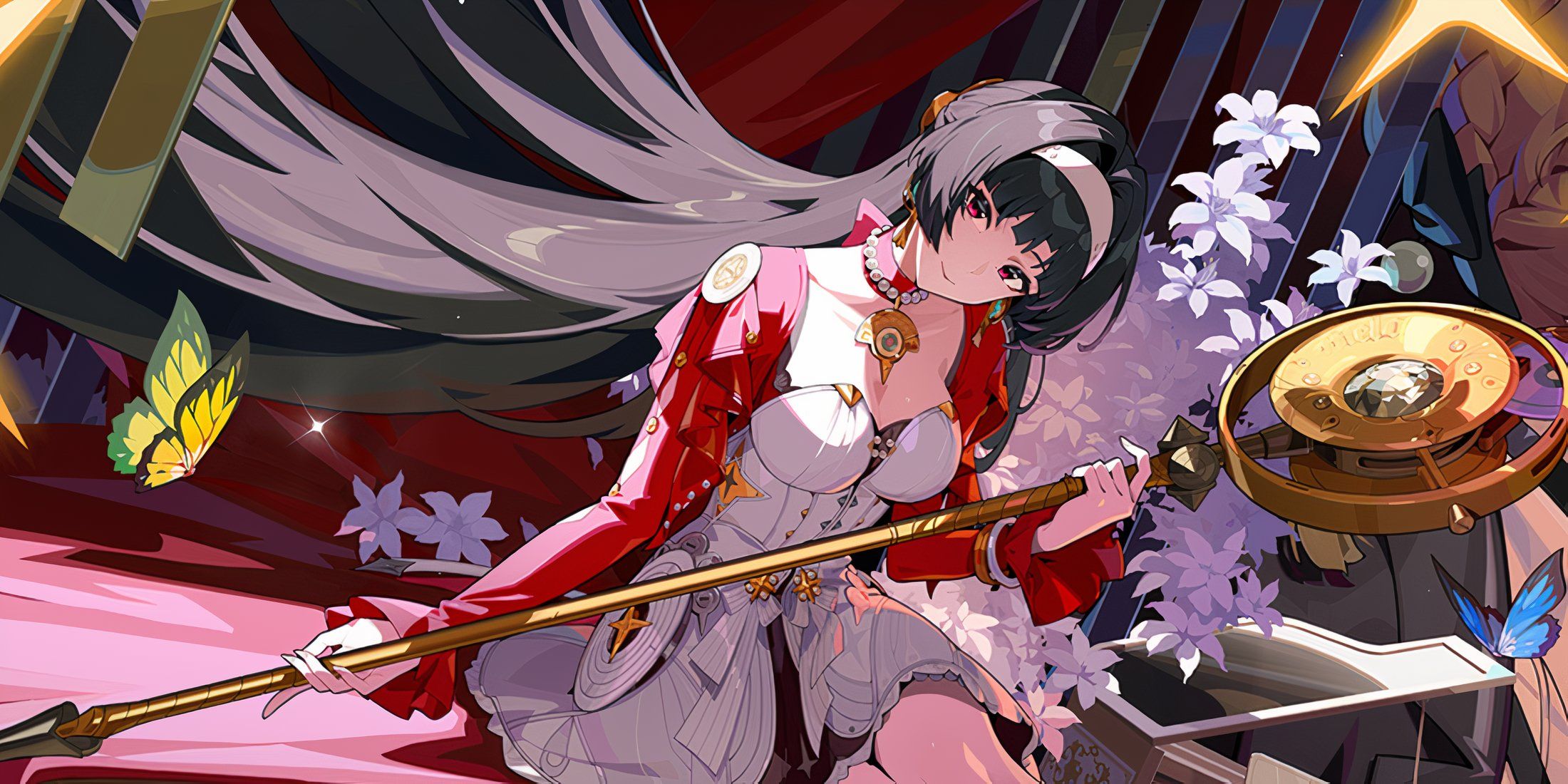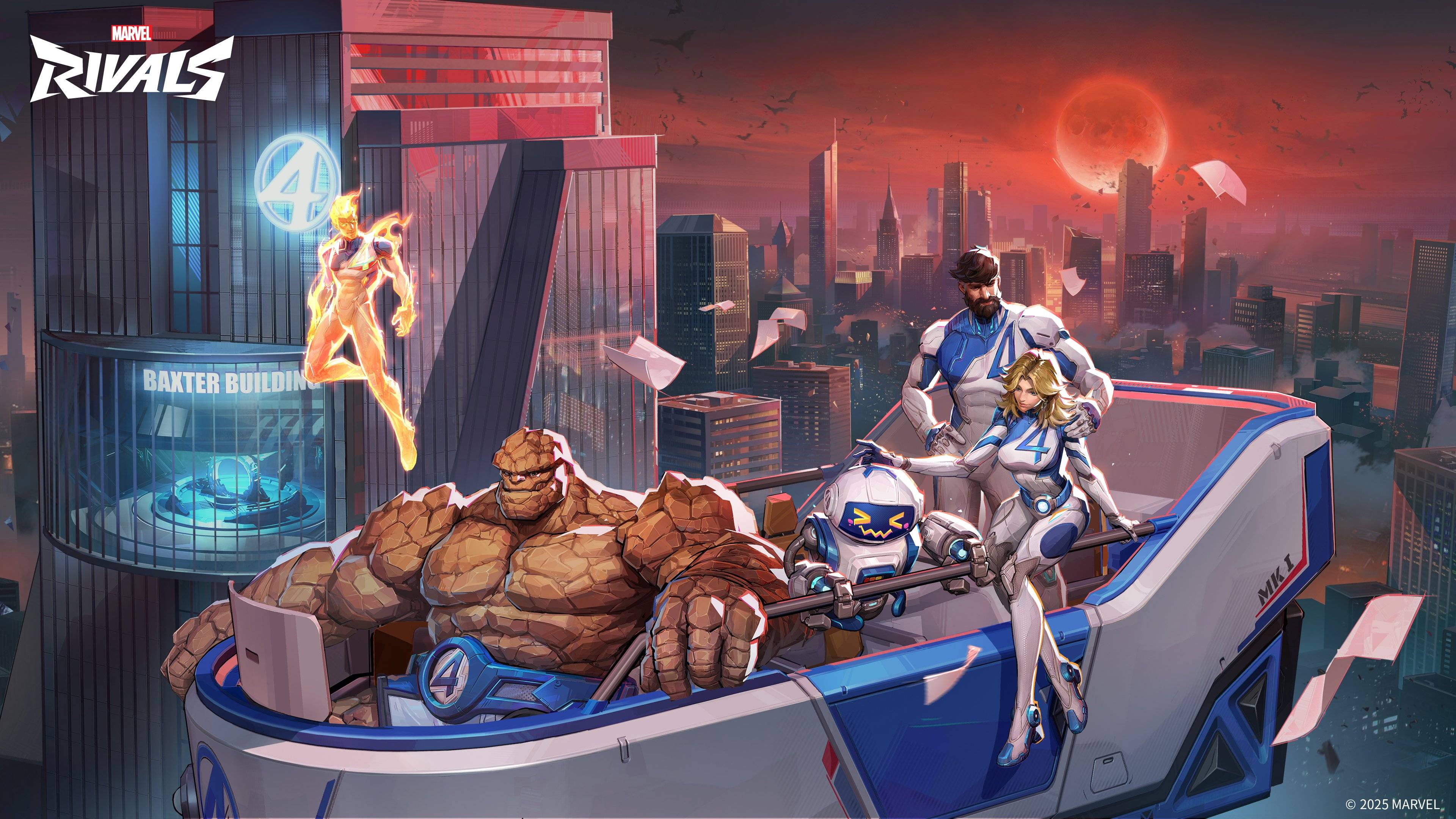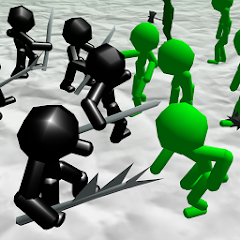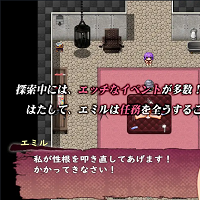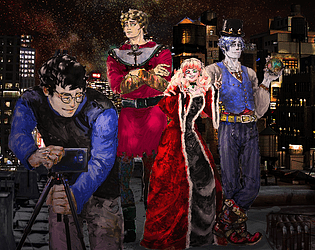"It would be very easy to make a bad film of Dune…" –Ridley Scott, South Bend Tribune, 1979
This week marks the 40th anniversary of David Lynch's Dune. Initially a box office disappointment with a $40 million haul upon its release, the film has cultivated a dedicated cult following over the past four decades since its debut on December 14, 1984. This is particularly notable when contrasted with the recent adaptations by Denis Villeneuve, which offer a stark stylistic departure from Lynch's take on Frank Herbert's celebrated novel. Renowned filmmaker David Lynch was announced to helm the project in May 1981 by mega-producer Dino De Laurentiis, stepping in after Ridley Scott, known for Blade Runner and Gladiator, withdrew from the venture.
Until recently, little was known about the version of Dune that Ridley Scott developed for De Laurentiis. Thanks to the diligent efforts of T.D. Nguyen, a 133-page October 1980 draft of Scott's envisioned film, penned by Rudy Wurlitzer (known for Two-Lane Blacktop and Walker), has been unearthed within the Coleman Luck archives at Wheaton College and shared with this author.
When Ridley Scott joined the project shortly after the success of Alien in 1979, Frank Herbert had already crafted an extensive two-part screenplay that was painstakingly faithful yet challenging to adapt cinematically, as previously reported by Wired and Inverse. Scott identified a few scenes he might utilize from Herbert's script but ultimately enlisted Wurlitzer to perform a comprehensive rewrite, starting from scratch at London's Pinewood Studios. This version, like those by Herbert and later Villeneuve, was intended as the first installment of a two-part saga.
Rudy Wurlitzer, reflecting on the adaptation process, shared with Prevue Magazine in 1984, "The Dune adaptation was one of the most difficult jobs I’ve ever done. It took more time to break it down into a working outline than to write the final script. I believe we kept to the spirit of the book but, in a sense, we rarefied it. We interjected a somewhat different sensibility."
In a 2021 interview with Total Film, Ridley Scott expressed his confidence in the script, stating, "We did a script, and the script is pretty fucking good."
Despite its potential, Scott's version of Dune did not come to fruition for several reasons, including his emotional distress following his brother Frank's death, his reluctance to shoot in Mexico as mandated by De Laurentiis, a budget exceeding $50 million, and the more appealing prospect of Blade Runner with Filmways. According to Universal Pictures executive Thom Mount, as detailed in this author's book A Masterpiece in Disarray – David Lynch's Dune, "Rudy’s version of the script did not receive unanimous, glowing enthusiasm."
The question remains whether Wurlitzer's script was a poor cinematic translation of Herbert's expansive narrative or too dark, violent, and politically charged for mainstream appeal. You can delve into our comprehensive analysis of the script to form your own opinion.
For this article, Rudy Wurlitzer (age 87) was contacted but was unable to participate, and Ridley Scott opted not to comment.
A Wilder Shade of Paul
The October 1980 draft of Dune opens with an evocative dream sequence of scorching deserts, where white dust vapors morph into apocalyptic armies ravaging the universe. This sets the stage for Paul's "terrible purpose." Ridley Scott's signature visual complexity is evident in descriptions like "birds and insects become a whirling hysteria of motion," showcasing his distinctive directorial flair.
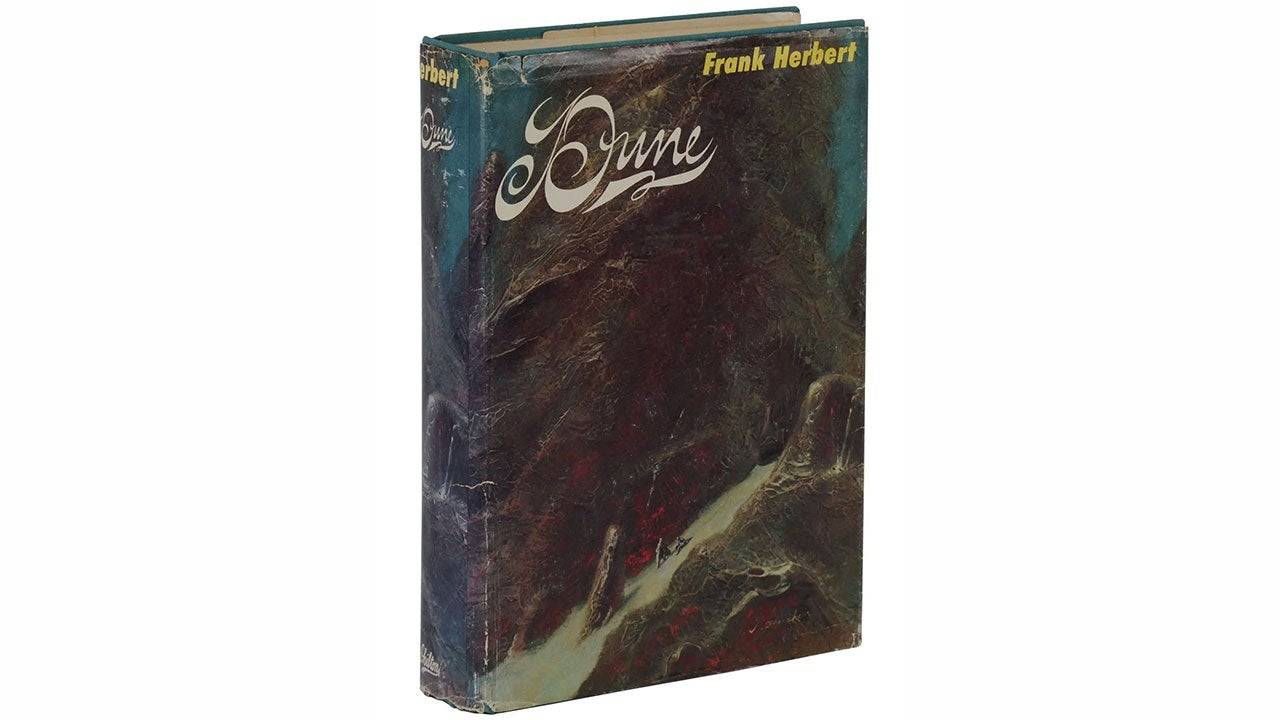 Frank Herbert's Dune (First Edition)As Scott explained to Total Film, "We did a very good take on Dune, because early days, I’d work very, very closely with the writer. I was always glomming the look of the film onto what he or she was writing."
Frank Herbert's Dune (First Edition)As Scott explained to Total Film, "We did a very good take on Dune, because early days, I’d work very, very closely with the writer. I was always glomming the look of the film onto what he or she was writing."
This sequence is dreamt by Paul Atreides, who awakens to rain pelting the windows of Castle Caladan. In this script, Paul is depicted as a 7-year-old with long blonde hair, poised to undergo the Reverend Mother's test with "the box." His recitation of the Litany Against Fear during the ordeal is intercut with his mother Jessica's, underscoring their psychic bond. Visuals of a burning hand, reminiscent of Lynch's film, are included but are not real.
Following the test, young Paul retrieves a sword from a guard using The Voice and nearly kills Duncan Idaho in his sleep to test the adage that "a true warrior never sleeps." This version of Paul embodies a "savage innocence."
Stephen Scarlata, producer of the documentary Jodorowsky's Dune, notes, "Rudy Wurlitzer’s version of Paul is far more assertive. He actively takes charge. We even see a flash-forward of his growth spanning from age 7 to 21, where his relentless training leads him to surpass Duncan Idaho. Personally, I prefer Lynch’s depiction of Paul. There’s an added tension in believing Paul might defeat Gurney, only to realize he doesn’t. This vulnerability makes us feel more fear and concern for him, especially when Paul and Jessica are forced to escape."
By the time Paul reaches 21, he is a master swordsman, described as "handsome, charismatic, regal." Duncan, who replaces the absent Gurney, is portrayed as "broader with white hair and beard" and shares a humorous demeanor akin to Jason Momoa's portrayal in Villeneuve's film.
DUNCAN
It is a teacher's duty to have his
pupil someday surpass him.
(smiling)
But, don't think you can relax. This
is just one level you have reached.
There are other, more perilous,
methods to master. But, not now.
Now we are going to get properly
drunk.
Long Live the Emperor
The narrative shifts to a rock garden outside the castle where Jessica observes a gardener raking white pebbles into patterns. Suddenly, rain begins to fall, prompting the gardener to kneel and proclaim, "the Emperor is dead," a pivotal moment not found in the book, as noted by screenwriter Ian Fried, who worked on Legendary's Spectral and an unmade modern version of The Island of Dr. Moreau.
"I absolutely love the moment of Jessica looking out across the castle at the gardener raking white pebbles into patterns," Fried told IGN. "Then all of a sudden it starts raining and the gardener falls to his knees, prostrates himself, looks up at the sky and says, 'the Emperor is dead.' I get chills just saying that. On the other hand, that's not at all from the book. There's so much material in Dune that to be adding new stuff is probably not what most people would have wanted or would want now. That was a really, really interesting part of the script, that the catalyst for everything is the Emperor dying."
The scene transitions to "the Emperor's Inner Kingdom," a mystical setting surrounded by Snow Peaks and a Mandala. Members of the Twenty-Four Great Houses gather to mourn the Emperor, enveloped by colorful energies. The dead Emperor communicates through an old Medium with hollowed-out eye sockets, bequeathing Duke Leto Atreides the stewardship of Arrakis/Dune to combat the encroaching darkness.
This darkness manifests in the form of Leto's cousin, Baron Harkonnen, who, through Feyd-Rautha, proposes a division of Arrakis' spice production to avoid conflict. Duke Leto declines, and a familiar line from the 1984 film emerges: "He who controls the spice controls the universe."
BARON
(to DR. YUEH)
Understand the position well
before you leave. Who controls
Dune controls the Spice, and
who controls the Spice controls
the Universe. Without me, your
Duke controls nothing.
Mark Bennett of DuneInfo comments, "Normally I have credited Lynch with this great line. Given that this was a De Laurentiis project script, I wonder if Lynch read it and borrowed that line, or came up with it independently?"
Flight of the Navigator
A scene reminiscent of Lynch's version occurs as the Atreides family departs Caladan aboard a Guild Heighliner, revealing a Navigator. Described as "an elongated FIGURE, vaguely humanoid with finned feet and hugely fanned, membranous hands, floating in a transparent outer container, like a loose, flexible skin; a fish in a strange sea with eyes of Total Blue," the Navigator ingests a pill, enters a coma, and guides the Heighliner's course with musical intonations, reminiscent of Scott's later film Prometheus.
"I absolutely loved that they were able to show the Navigator," Fried adds. "Even though I love the Denis Villeneuve movies, I'm really disappointed we didn't get to see his take on that. A missed opportunity."
Upon arriving on Arrakis, the Atreides' Arakeen fortress evokes the aesthetic of Scott's Legend, with its medieval atmosphere, feudal customs, and emphasis on swords. The script's ecological themes are highlighted through Liet Kynes' introduction of his daughter Chani to Duke Leto and Paul, showcasing dissected native creatures and explaining the detrimental impact of spice harvesting.
The narrative intensifies with a scene of Paul and Duncan tracking a Harkonnen agent into a trading post, leading to an '80s-style bar fight. Duncan wields an axe like Conan the Barbarian, and Paul kills with a finger thrust to the throat.
*DUNCAN picks up the axe.
DUNCAN
(looking at it)
Nasty little instrument.
Not very well balanced, but it will
have to do.With a short snap to his wrist he
throws it at BURLY MAN coming
towards him holding a long iron
bar. The axe strikes him in the
chest, splitting him in two.*
Stephen Scarlata critiques this sequence, saying, "That feels like a bar brawl you’d find in a Burt Reynolds or Walter Hill action movie. The fight scene feels out of place because it makes Paul seem too invincible too soon. His journey is about growth - learning to survive, adapt, and lead. If he’s already effortlessly beating enemies, we lose the tension/fear for his safety key to making his transformation meaningful."
In this script, Paul and Duncan encounter the Fremen leader Stilgar, who decapitates a lone Harkonnen agent. Jessica is shown levitating during meditation, and she and Duke Leto decide to conceive a child, symbolized by her dialogue: "When you release your seed it will be like sacred oil poured into an altar fire."
Baron Wasteland
Dr. Yueh, after receiving a cryptic message from a blinking insect, shares a poignant moment with Paul before sending him into the city for a night of freedom. Paul follows a homeless boy into a Fremen Spice Den, inhaling blue spice vapor and experiencing visions of his unborn sister Alia, who intones "Maud'Dib." He encounters an Old Crone overseeing a pit with a red ball and a tiny sandworm, which Paul hypnotizes and places in a conch shell.
Yueh poisons Thufir during a chess game and deactivates the house shield, allowing Harkonnen Death Commandoes to infiltrate the castle. Paul, returning from the slums, confronts a Hunter-Seeker, now a bat-like creature with a cobra's head, which he decapitates.
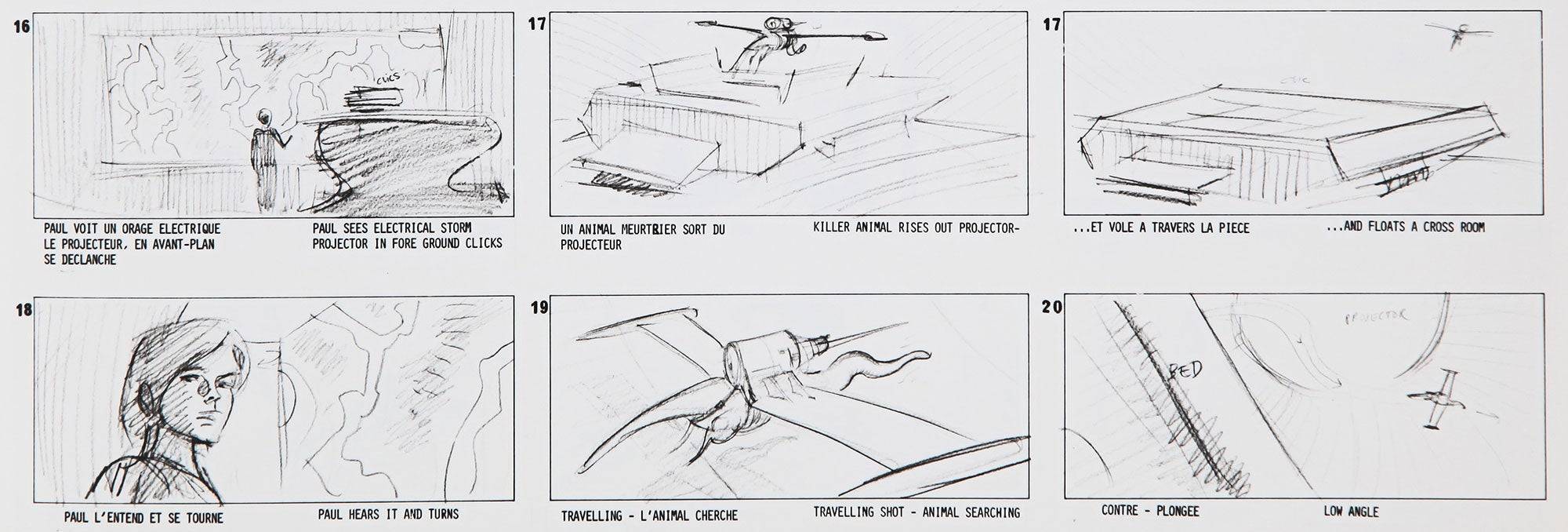 The bat-like Hunter-Seeker in Ridley Scott's version is similar to the "flying creature with a bomb" from Alejandro Jodorowsky’s unmade Dune, seen here in storyboard art."The Hunter-Seeker scene is fascinating to me," Scarlata remarks. "Introducing a biological twist to the usual mechanical device mirrors Alejandro Jodorowsky’s unmade Dune from a few years earlier, where the Hunter-Seeker is a flying creature with a bomb strapped to its back… Paul slows his heart rate, disarms the creature, and throws the bomb out the window. Both versions experiment with an animalistic take."
The bat-like Hunter-Seeker in Ridley Scott's version is similar to the "flying creature with a bomb" from Alejandro Jodorowsky’s unmade Dune, seen here in storyboard art."The Hunter-Seeker scene is fascinating to me," Scarlata remarks. "Introducing a biological twist to the usual mechanical device mirrors Alejandro Jodorowsky’s unmade Dune from a few years earlier, where the Hunter-Seeker is a flying creature with a bomb strapped to its back… Paul slows his heart rate, disarms the creature, and throws the bomb out the window. Both versions experiment with an animalistic take."
Duke Leto fends off the Death Commandoes before being shot with a dart by Yueh. Duncan arrives to save Leto but is fatally wounded. Jessica places a poison gas capsule in Leto's mouth before he dies, and Duncan sacrifices himself to allow Paul and Jessica to escape in an Ornithopter.
The Deep Desert Controversy
Paul and Jessica's escape into the deep desert is harrowing, with Paul's piloting causing G-force distortions. After a crash, they don Stillsuits and trek through the desert, eventually confronting a massive sandworm face-to-face.
Notably absent from this draft is the incestuous relationship between Paul and Jessica, a controversial element in earlier versions that both Herbert and De Laurentiis rejected. "He wanted to do an incest movie!" Herbert exclaimed to The Sacramento Bee in 1982. Wurlitzer admitted, "In one draft I introduced some erotic scenes between Paul and his mother, Jessica. I felt there was always a latent, but very strong, Oedipal attraction between them, and I took it one note further. It went right in the middle of the film, as a supreme defiance of certain boundaries, perhaps making Paul even more heroic for having broken a forbidden code."
While the draft does not include the incest, it does feature a scene where Paul and Jessica slide down a sand dune together, losing their supplies.
Seeking shelter in an ancient cave within a giant worm carcass, they are discovered by a group of Fremen led by Stilgar. Paul is challenged to a death duel by Jamis, which he accepts without hesitation. Jessica, not Chani, advises Paul on combat techniques and hands him the crysknife, announcing him as the Lisan al-gaib.
The battle with Jamis is brutal and concludes inside the worm carcass. Paul's victory prompts some Fremen to take items from Jamis' body, and Paul reflects on the cost of killing, shedding tears for his fallen opponent.
At a Fremen camp, a Spice ceremony takes place, with Paul receiving the name Maud'Dib. Kynes, aware of the Lisan al-gaib legend's origins, supports it to advance their ecological goals. Paul learns that he has won Chani, Jamis' widow, as his mate, and he pours Jamis' water into the tribe's reservoir.
The script culminates in a Water of Life ceremony led by a Shaman with three breasts and male genitalia, who performs an erotic dance around a 10-foot-long sandworm. Jessica drinks the Water of Life, merging with the Reverend Mother's aura, and is proclaimed the new Reverend Mother. Paul's acceptance as the Messiah is solidified, and he prepares to ride a sandworm, though the script ends before depicting this iconic scene.
Conclusions
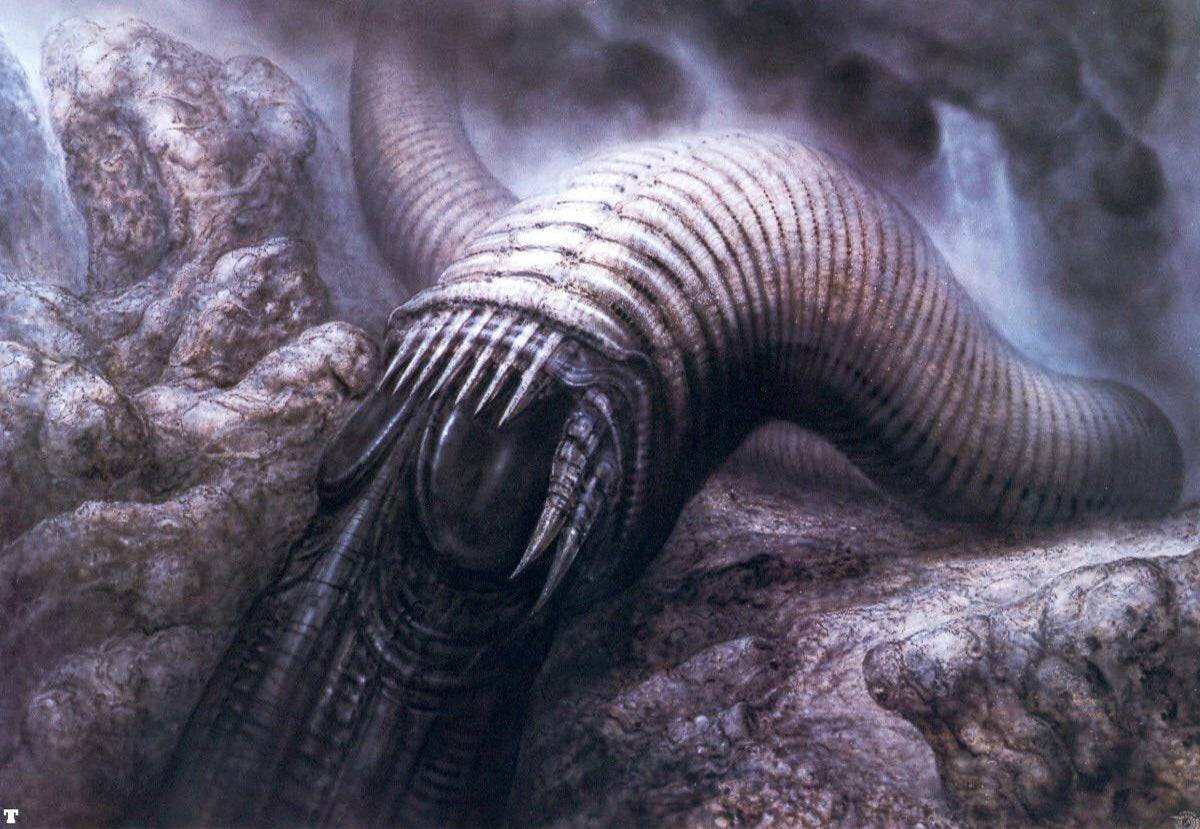 H.R. Giger's exceedingly phallic sandworm design.Frank Herbert's Dune series critiques the dangers of charismatic leadership, a theme central to Denis Villeneuve's adaptations and planned Dune Messiah film. Wurlitzer's script portrays Paul as a confident young man accepting his destiny as a universal dictator, a darker take than Herbert's original.
H.R. Giger's exceedingly phallic sandworm design.Frank Herbert's Dune series critiques the dangers of charismatic leadership, a theme central to Denis Villeneuve's adaptations and planned Dune Messiah film. Wurlitzer's script portrays Paul as a confident young man accepting his destiny as a universal dictator, a darker take than Herbert's original.
This script, conceived during the rise of modern science fiction post-Star Wars and Alien, ambitiously tackled ecological and socio-political themes. Its mature, revisionist approach to sci-fi may have been ahead of its time, much like Zack Snyder's adaptation of Watchmen.
Ridley Scott's vision for Dune aimed to visually establish key relationships and streamline the narrative. The Emperor's death serves as the catalyst for the story, rather than his convoluted plan, and the script offers more depth to characters like Kynes.
Wurlitzer's script, while not universally embraced, provides a unique perspective on Dune, emphasizing ecological, political, and spiritual themes equally. Its legacy includes H.R. Giger's designs and influences on subsequent adaptations and films like Gladiator II.
As Frank Herbert's Dune approaches its 60th anniversary, the themes of environmental decay, the perils of fascism, and the need for societal awakening remain as pertinent as ever, suggesting that future adaptations might yet explore these elements more deeply.

 Latest Downloads
Latest Downloads
 Downlaod
Downlaod




 Top News
Top News
